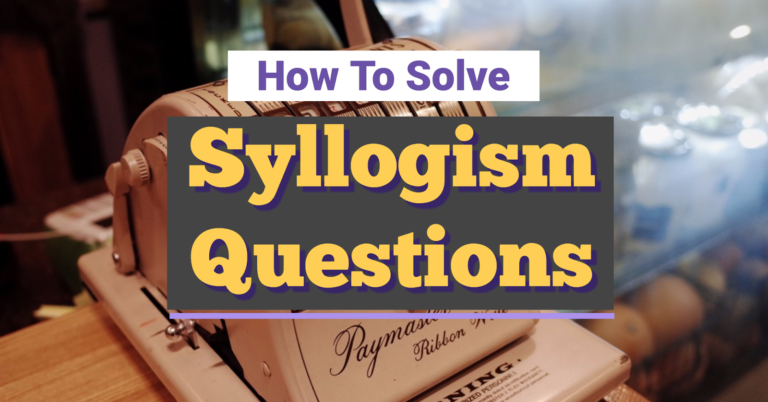Syllogisms draw inferences from several propositions using the deductive reasoning principle. You will be required to complete syllogism problems. You can do the syllogism questions pdf download here in a constrained amount of time in a significant portion of competitive exams like SBI PO, CAT, etc. A syllogism might be challenging even if you are a skilled wordsmith. To perform well on this part, you must continuously practise. Regular practice will improve your speed and accuracy and your ability to understand the underlying ideas of syllogism. Two main characteristics of this are two or more assertions and two or more conclusions.
Table of Contents
What is a Syllogism?
“Syllogism,” which means inference or conclusion, is derived from the Greek word “Syllogimos.” In syllogism questions, you must use deductive reasoning to draw a particular conclusion from logical arguments or assertions. One of the famous thinkers recognised for their contributions to syllogisms is Aristotle.
Questions posed in syllogisms – types
As a result, you may anticipate various scenarios in the syllogism questions. But for your convenience,The major categories that are most likely to be asked in tests will be covered.
- Each A is a B
According to this expression, A is included in B, but not necessarily the other way around. This indicates that A is a part of B, although B may not be a part of A. Circle A is inside circle B, meaning B contains all A, and all A are B.
- A = B
In this instance, the conclusion is similar to the previous, i.e., “All A is B.” Here, both “All A is B” and “All B are A” is true. This implies that A is a subset of B and that B is a subset of A. In this instance, both A and B are enclosed within one another. As a result, all of B is contained in A in this instance, and vice versa.
- No A are B
Since B does not include any of A, A is not included in B. As a result, A and B are disjoint sets. In this case, neither a portion of A nor a portion of B is included within A. Therefore, neither A nor B contains any of the components of the other.
Guidelines for Answering Questions Based on Syllogisms
Syllogisms put your deductive reasoning to the test, but there are a few strategies you may use to make assertions and conclusions more straightforward. The primary method consists of making connections between statements and checking the arguments made in the decision.
- To quickly separate one assertion from another, use Venn diagrams.
- Examine every possibility in sentences that use the words “all” and “no.” If a statement exists that reads, “All white is black. Pink can also be white. There are many different ways that this statement might be true; some pink could be black, and some black could be white. It would be best to weigh each possibility in situations like these before drawing any judgements.
- The words “some” and “all” in syllogism questions pdf download might be misleading. Try to distinguish between what is meant when some A is B and what is meant when all B is A. It doesn’t follow that all D is C if all C is D.
- Always approach a syllogism issue sequentially. The second statement, which may represent the link between the first and third statements, will be recovered if you immediately assume the third assertion following the first, leading to clarity.
- Find a connection between the statements and the conclusions. One of their essential characteristics in competitive exams is that syllogism questions always draw a line between two opinions. Start by carefully reading each statement, then create a typical relationship to identify the appropriate conclusions.

